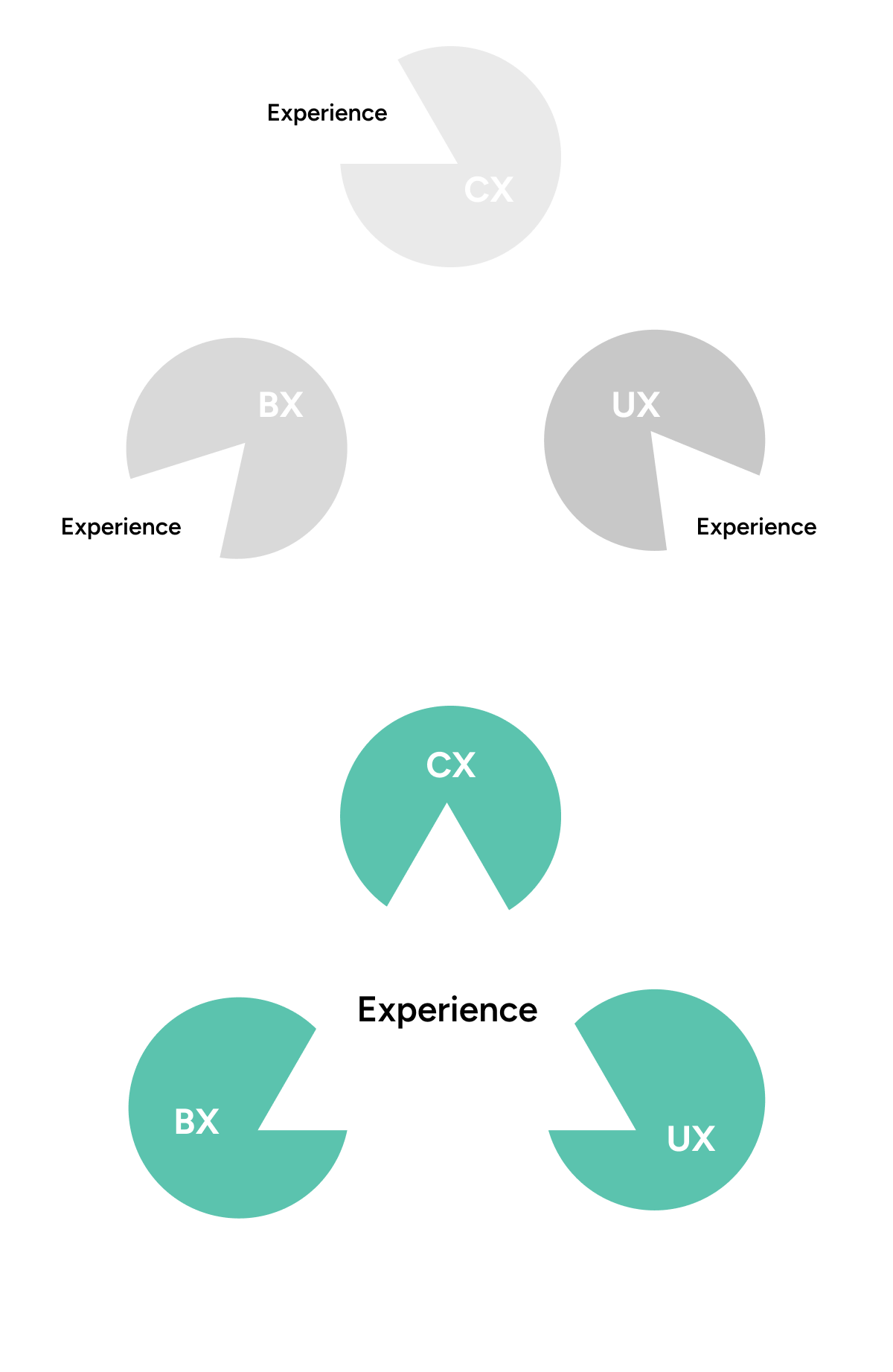
Zum Kunden führen!
Entdecken die Unternehmen den Kunden neu? Nach Jahren des nach Innen gerichteten und auf Effizienz betriebenen Unternehmertums (wo die Saldo-Ziele dem Geschick des Unternehmens selbst geschuldet waren, statt dem Engagement der Kunden) verändert sich der Fokus. Weil Firmen wie Apple und dm dank der Loyalität und Spenderfreudigkeit ihrer Kunden gedeihen und Erfolge einfahren, wollen viele es ihnen gleichtun. Die Frage stellt sich daher, wie man eine so loyale und motivierte Kundschaft erzeugt – und Loyalität ist hier nicht genug: Auch der Umsatz muss angekurbelt werden!
Wie kann man also Menschen davon überzeugen, zu einem zu halten, die angebotenen Dienste zu konsumieren und aktiv für sein Unternehmen zu werben? Man benötigt dafür eine starke Marke, relevante Angebote und ein Erlebnis, das die Kunden gerne mit anderen teilen wollen. Dabei ist es nicht genug, nur in einem dieser Aspekte führend zu sein: Man muss bei allen den Nagel auf den Kopf treffen, damit die Kunden sich mit einem verbünden! Daher macht es keinen Sinn, sich nur auf die Gestaltung seiner Produkte zu richten, nur seine Servicequalität zu verbessern oder nur die Marke aufzuladen: Es sind nicht die einzelnen Instrumente, die zählen, es ist das Orchester, das zählt!
Und hier beginnt das Problem: In vielen Unternehmen werden die „Instrumente“ unabhängig voreinander gespielt. Dies zwar von spezialisierten Menschen, die perfekt einen spezialisierten Teil eines Unternehmens effizienter und effektiver machen können, jedoch jedes für sich und eben nicht geführt. Manager und Managerinnen, die ausgebildet sind, Entscheidungen zu fällen, stellen dabei sicher, dass jeder Teil der Organisation seine Zielsetzungen erreicht oder übertrifft. Viele Unternehmen werden von fähigen Managern gemanagt – aber was diese selten beherrschen, ist die Fähigkeit zu führen. Und dies nicht zwingend, weil sie das nicht könnten, sondern vor allem, weil ihnen die richtigen „Führungsinstrumente“ fehlen!
Führen ist nicht leiten
Ein Unternehmen zu führen bedeutet eben nicht, die Mitarbeitenden anzuleiten, bestimmte Aufgaben auszuführen oder Zielsetzungen zu erreichen. Führen ist nicht Leiten, es ist ‚Dirigieren‘. Um ein Unternehmen zu dirigieren, damit es herausragende Kundenerlebnisse entwickeln und generieren kann, braucht es keine Leitung. Es braucht Führung. Dabei ist Führung nicht etwas, das zwingend durch eine Person ausgeführt wird – sie wird vielmehr durch eine Person „dirigiert“. Führung entsteht dann, wenn alle Beteiligten am Unternehmen (‚Geführte‘) – unabhängig von ihrem Rang und Status – sich auf das gleiche Ziel richten oder sich auch zentrieren.

Dies bedeutet, dass Führung eine Eigenschaft der Organisation ist und nicht eine „des Managements“. Es ist die Verbundenheit und Sinnstiftung unter jenen, die im und für das Unternehmen tätig sind. So gilt für Mitarbeitende des Ritz-Carlton, dass sie „Ladies und Gentlemen sind, die Ladies und Gentlemen zu Diensten sind.“ Da gibt es eine klare Führungsprämisse: Führung muss bei allen in der Organisation gegeben sein, damit ein Unternehmen etwas unternehmen kann.
Was es gilt, ist diese ungeteilte Zentrierung auf die Kunden und deren Rolle für alle in der Organisation zu entwickeln. Denn je deutlicher ein Unternehmen auf seine Kunden zentriert ist, desto effektiver wird das Unternehmen sein (davon ausgehend, dass es schon effizient arbeitet). Es kann so, weil die Mitarbeitenden „geführt“ sind, die richtigen Angebote und gewinnende Identität erzeugen, welche die Kundschaft begeistert. Damit dies gelingt, muss der „Dirigent“ wissen, ob alle Mitarbeitenden wirklich geführt sind und ob sich eine Kundenzentrierung einstellt.
Customer Centricity Score
Mit dem Customer Centricity Score kann ein Unternehmen feststellen, ob seine Belegschaft hier „bei der Stange bleibt“. Der CC-Score misst den Grad der internen Kundenzentrierung über das gesamte Unternehmen hinweg, eben weil das „Orchester“ nicht zusammenhockt, sondern weil es – gewollt oder ungewollt – über die Abteilungen hinweg agiert. Mit dem Score kann die Qualität der Führung abgebildet werden und den Dirigierenden dabei helfen, die Zusammenarbeit und das „Zusammenspiel“ zu verbessern.
Aber auch die Kunden selbst sind Teil eines „Führungsinstruments“: Ihre Reaktion auf das Zusammenspiel der Unternehmensteile und das Gesamtergebnis ist entscheidend für den Unternehmenserfolg. Gute Dirigenten wissen genau, ob das Publikum auch bei „der Stange“ ist, und nutzen deren Rückmeldung für ihre Arbeit mit dem Orchester. Unternehmen fragen ihre Kunden, zum Beispiel mit der NPS-Methode, um herauszufinden, ob diese auch weiterempfehlen würden. Auch die Nachfrage am Ausgang, ob „es gefallen hat“, ist als Kundenzufriedenheitsmessung eine feste Grösse in der Verbesserungsarbeit in Unternehmen. Kunden werden dann auf jene Aspekte hinweisen, die am Erlebnis gut oder falsch liefen, jedoch nicht auf jene, die dazu nötig waren, das optimale Erlebnis zu kreieren. Zielführend ist hier die Frage nach der Wirkung, dem Impact, den das gesamte Unternehmen auslöst. Mit dem Customer Impact Score kann die Wirkung der Führungsarbeit im Unternehmen hinterfragt werden und somit aufzeigen, wo die Führung stark und wo sie schwächer ist.
Unternehmen „radikal“ zu führen, so sagte Reinhard Sprenger, beginnt bei der Wurzel: dem Unternehmen selbst. Kunden sind der Existenzgrund eines Unternehmens. Daher muss eine Führung dazu anhalten, alles, was vom Kunden ablenkt, auf ein Minimum zu reduzieren: Transaktionskosten, als Abbild interner Ineffizienz, muss man radikal reduzieren. Übrig bleibt die Zentrierung auf das, was das Kundenbündnis stärkt: Eine Belegschaft, die weiss, wie sie für die Kunden da sein muss, und eine Erlebniswelt – eine Customer Experience – die Kunden begeistert. Um diese Führungsarbeit zu meistern, helfen Customer Centricity und Impact Score dabei, aufzuzeigen, ob Mitarbeitende und Kunden gleichermassen „bei der Stange bleiben“.
Customer Centricity Award 2025
Der Customer Centricity Award wird 2025 erstmalig an Unternehmen im deutschsprachigen Raum verliehen, die in Sachen Kundenzentrierung am meisten punkten. Unsere Jury sind Ihre Kunden: Mittels einer systematischen Befragung Ihrer Kunden wird der sogenannte Customer Impact Score® erhoben.
Weitere Informationen finden Sie hier.



